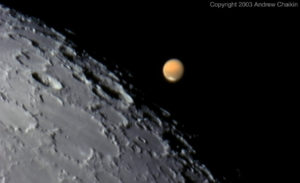Introduction
In the era of Web 3.0, where technology continues to redefine our boundaries and challenge the limits of what we can achieve, it’s important to reflect on the possibilities it offers, not just within the digital realm but also beyond the Earth’s confines. We are on the cusp of breaking free from the gravitational pull of our home planet, thanks to innovative ideas, generational wealth, and the unyielding spirit of human exploration. Organizations like NASA have already paved the way, igniting dreams of venturing to distant worlds like Mars and the Moon.
Web 3.0: The Digital Revolution
Web 3.0, the successor of Web 2.0, represents a paradigm shift in how we interact with information and technology. It embraces the concept of the decentralized internet, powered by blockchain and AI technologies, and promises to redefine the way we exchange data and value. While the digital sphere is expanding, its effects can reverberate far beyond the virtual world.
NASA’s Bold Missions: Mars and Beyond
NASA, the epitome of human achievement in space exploration, has set audacious goals. According to the bipartisan NASA Authorization Act of 2010 and the U.S. National Space Policy, NASA is developing the capabilities needed to send humans to Mars by the 2030s. This endeavor reflects our intrinsic curiosity to understand the cosmos and explore destinations where life might have once existed.
Mars, often dubbed as Earth’s celestial cousin, is a rich source of scientific knowledge. Its history and evolution parallel that of our own planet, providing us with insights into Earth’s past and future. While it might not support life as we know it today, Mars did have conditions suitable for life in the distant past. As we explore this enigmatic red world, we inch closer to answering one of the most profound questions: “Does life exist beyond Earth?”
Low-Earth Orbit: A Proving Ground
Human exploration of Mars starts much closer to home, in low-Earth orbit. The International Space Station serves as a critical platform for testing technologies and communication systems necessary for deep space missions. Astronauts aboard the station contribute to our understanding of how extended space travel affects the human body, vital knowledge for planning Mars missions.
The next milestone in our cosmic journey involves deep space. NASA will dispatch a robotic mission to capture and redirect an asteroid into lunar orbit. Astronauts, aboard the Orion spacecraft, will explore this asteroid, returning to Earth with invaluable samples. These experiences in human spaceflight beyond low-Earth orbit allow NASA to validate new systems and capabilities, such as Solar Electric Propulsion, essential for future Mars missions.
The Power of Generational Wealth
Now, let’s circle back to the concept of generational wealth. While it’s often associated with financial resources passed down through families, in the context of space exploration, it signifies the accumulation of knowledge, innovation, and determination through generations. The dreams of reaching the Moon and Mars are nurtured and handed down, just as wealth is in a family. These dreams, driven by human curiosity, continue to shape the future of space exploration.
The Road to Mars
Engineers and scientists across the globe are tirelessly developing the technologies that will enable astronauts to survive and thrive on Mars. NASA collaborates with international partners and the U.S. commercial space industry on a coordinated plan for expanding human presence throughout the solar system. The goal is clear: to land humans on the surface of Mars.
Conclusion: Embracing the Disruptive Power of Web 3.0
Web 3.0 is reshaping our digital world, but its impact doesn’t stop at the internet’s edge. As we embrace the possibilities of generational wealth, the dreams of reaching distant planets like Mars and the Moon are becoming tangible realities. It’s a testament to human ingenuity, unity, and the enduring spirit of exploration.
We must remember that just as NASA has pushed the boundaries of space exploration, we, too, can break free from our limitations, driven by the disruptive nature of Web 3.0, generational wealth, and the motivation to explore the cosmos. The sky is not the limit; it’s just the beginning.
As we look up to the stars, the possibilities are limitless, and it’s up to us to reach for them. NASA has shown us the way, but it’s the collective human effort, fueled by dreams and innovation, that will make moon travel and interplanetary exploration a reality.



